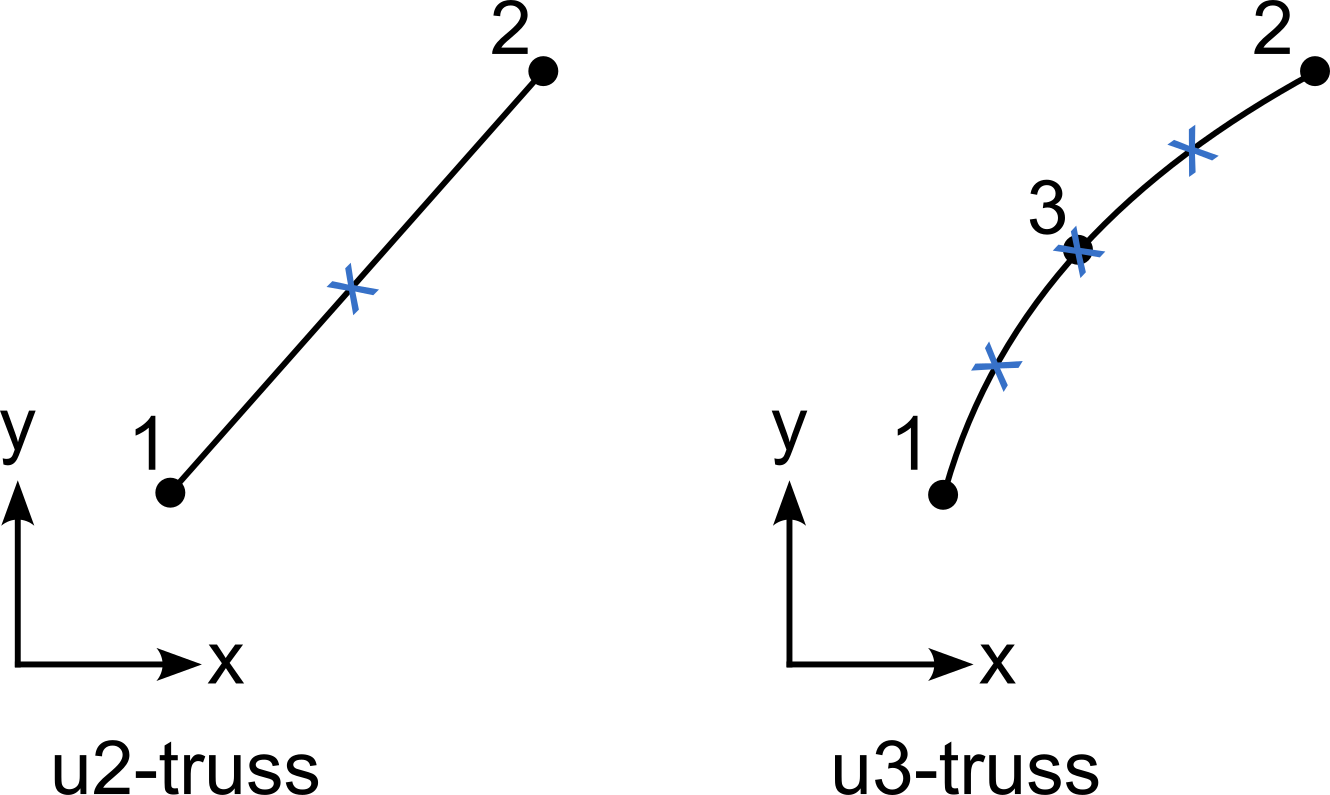Truss elements
Upcoming release
Truss elements will be available with the upcoming release

Truss (or cable) elements are structural members capable of transmitting stresses only in the direction normal to the cross section. It is assumed that this normal stress is constant over the cross-sectional area. Details on the implementation are provided in the Theory Manual.
The properties of truss elements are assigned using the *Material keyword in combination with the *Truss properties sub-keyword. See the Reference Manual for more information.
2D Elements
| Element label | Dim. | Shape | Nodes | Order | nIP* |
|---|---|---|---|---|---|
u2-truss |
2D | truss | 2 | linear | 1 |
u3-truss |
2D | truss | 3 | quadratic | 3 |
* nIP = number of integration points
3-node elements
Since truss elements have no bending stiffness, mechanisms may occur, when using 3-node truss elements as ‘stand alone’ elements, if the central node is not constrained in some way.
3D Elements
| Element label | Dim. | Shape | Nodes | Order | nIP* |
|---|---|---|---|---|---|
u2-truss-3D |
3D | truss | 2 | linear | 1 |
u3-truss-3D |
3D | truss | 3 | quadratic | 3 |
* nIP = number of integration points
Additional output
For truss elements additional output variables are available. In addition to general output in cartesian coordinates such as displacements, stress and strain, local quantities in direction of the truss axis can be requested:
stress-truss: stress in direction of the truss axis in F/L²strain-truss: strain in direction of the truss axis